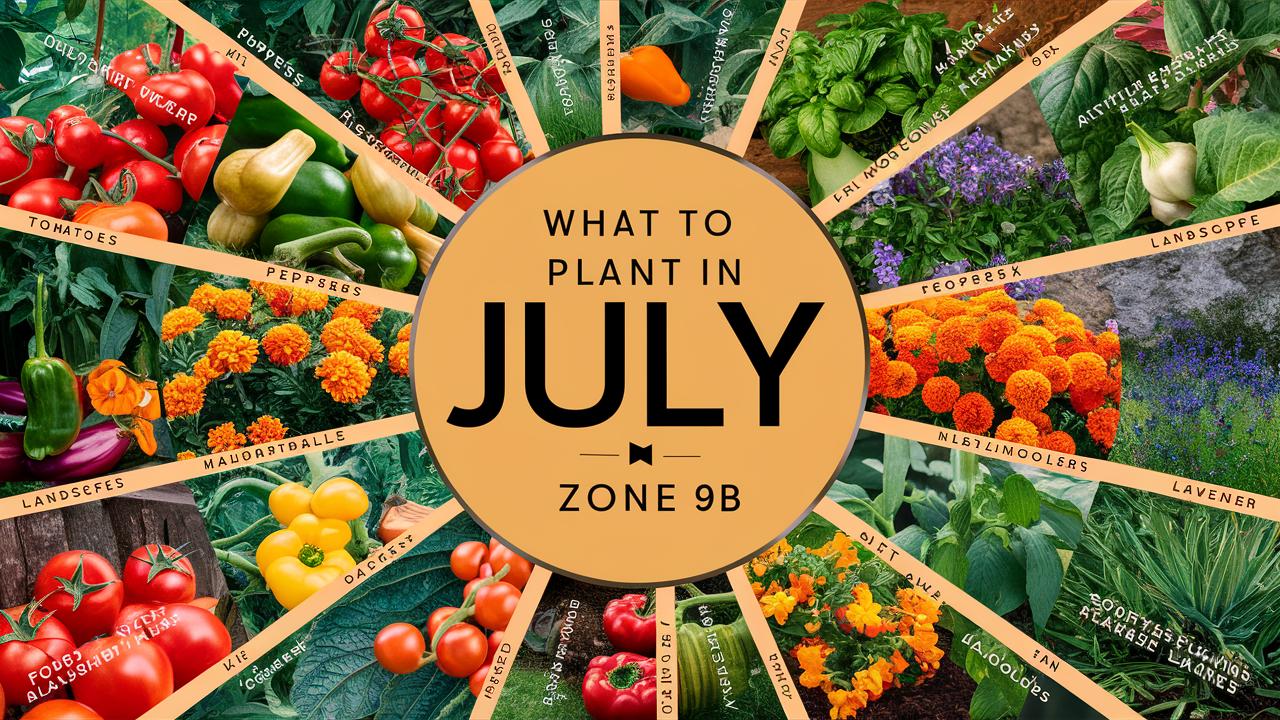In this detailed guide, we will explore various plants suited for planting in July in Zone 9b, including essential details on temperature tolerance and specific planting instructions.
Vegetables To Plant
July is an excellent time for planting a unique variety of vegetables that thrive in the heat. Here are some top picks for your summer garden.
Okra
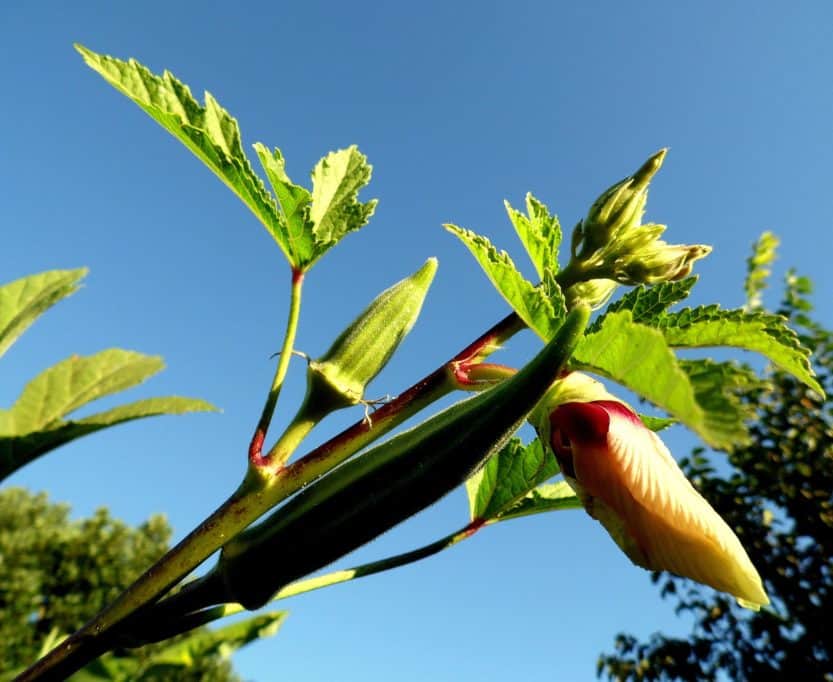
Okra is a staple in Southern cooking and thrives in high temperatures, making it perfect for July planting in Zone 9b. This heat-loving vegetable typically germinates in temperatures exceeding 70°F and can tolerate temperatures as high as 95°F. Plant okra seeds 1-2 inches deep and 12-18 inches apart after the last frost date, typically around mid-March in this zone. It requires full sun and well-drained soil. Regular watering is crucial, especially in extremely hot weather, to encourage healthy pod development.
Southern Peas (Cowpeas)
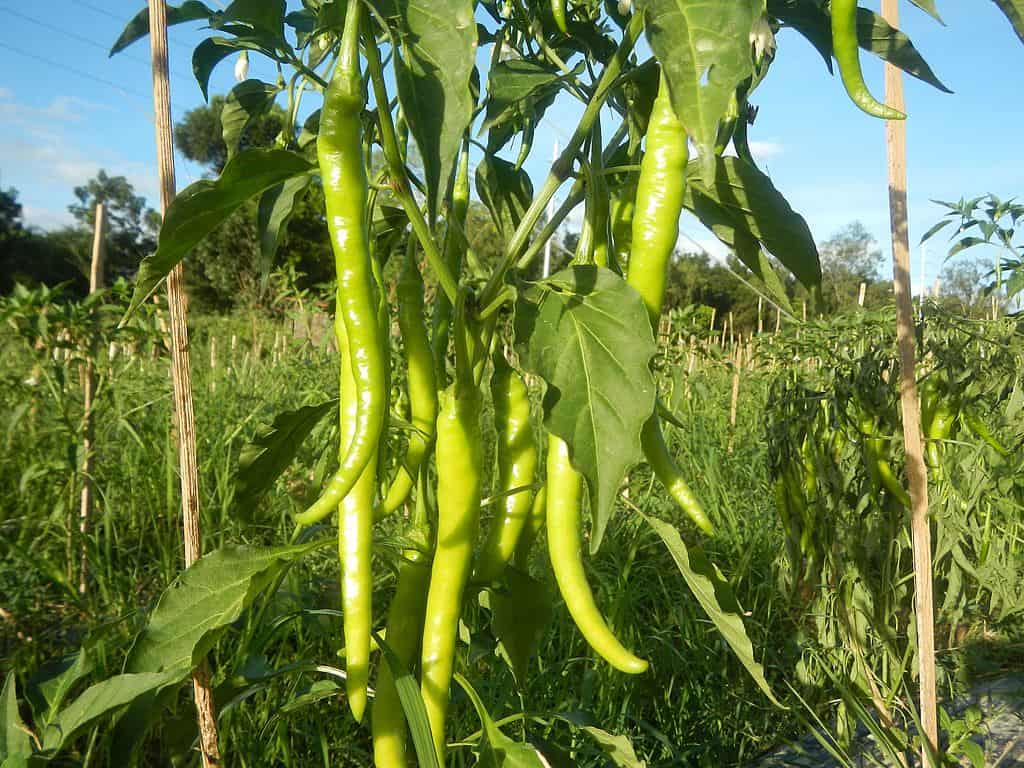
Southern peas are another excellent choice for planting in July, as they handle the heat well and can tolerate drought conditions once established. They grow best in warm weather, germinating in soil temperatures of 70°F and above. Plant seeds directly in the garden, spaced 2-3 inches apart, and about 1 inch deep. These plants typically require a trellis for support. Harvest pods when they are young for the best flavor, usually 60-90 days after planting.
Eggplant
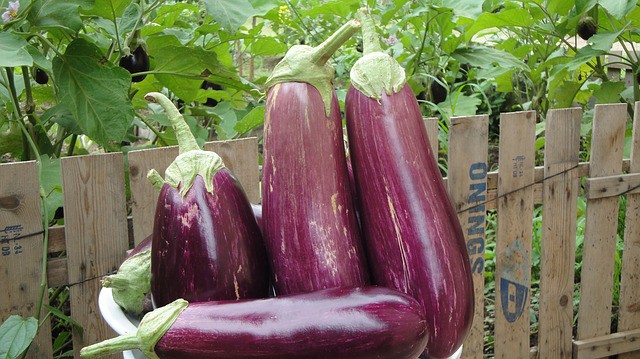
Eggplants flourish in the warm summer months and can be planted in July in Zone 9b. They require consistently warm temperatures to thrive, ideally growing in soil that’s consistently above 70°F. Seedlings can be transplanted into the garden when they reach about 3-4 inches tall, spaced 18-24 inches apart. Ensure they receive plenty of sunlight and be cautious of pests, particularly aphids and flea beetles. Regular watering will enhance fruit production and maintain moisture levels in the soil.
Bell Peppers
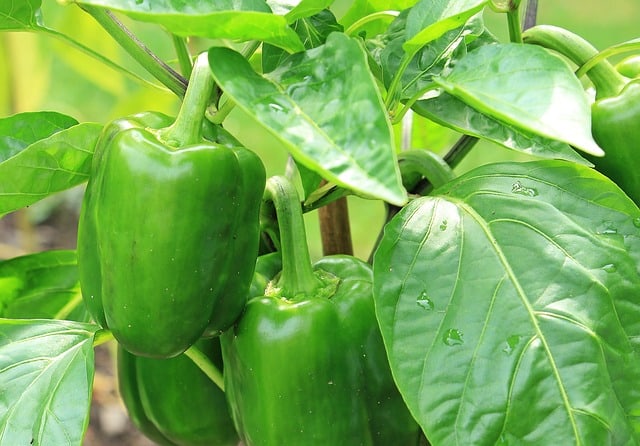
Bell peppers are another summer favorite that enjoy the heat of July. They are typically planted from transplants 18-24 inches apart in well-drained soil enriched with organic matter. With ideal soil temperatures around 70°F or higher, peppers should be watered consistently, especially during fruit formation. Peppers are susceptible to blossom drop if temperatures rise excessively without adequate moisture, so regular watering during hot spells is critical.
Cucumbers
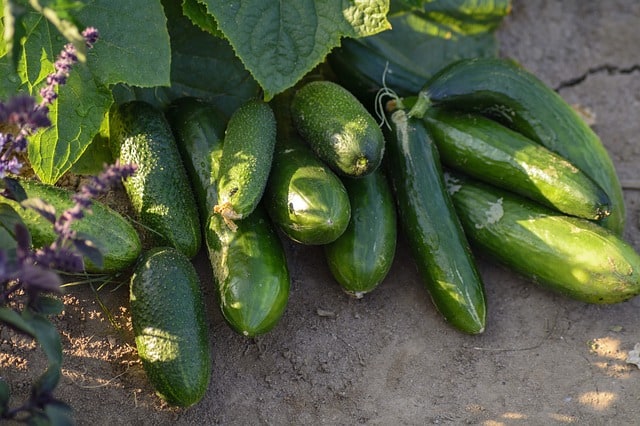
Cucumbers are fast-growing vegetables that thrive in the warm summer months. They prefer moist, well-draining soils, with ideal temperatures between 70-90°F for germination. In July, plant cucumber seeds directly in the ground one inch deep, spacing them 36-42 inches apart for full sprawling growth, or use trellises for vertical gardening to save space. These plants benefit from frequent watering, especially during fruit development.
Zucchini
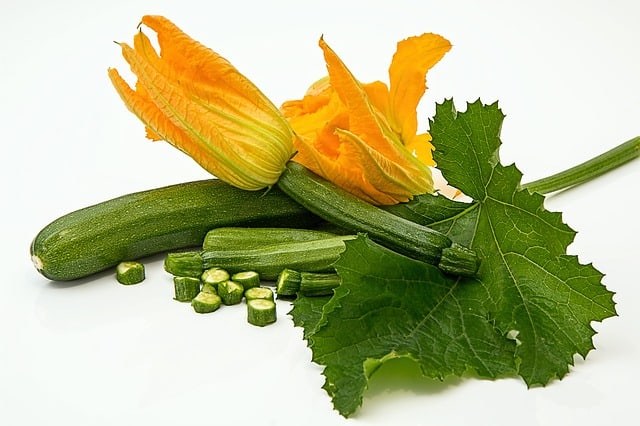
Zucchini is known for its prolific yields and is well-suited to the hot weather of July in Zone 9b. Seeds can be planted directly into the garden at a depth of 1 inch and spaced 24-36 inches apart. Zucchini thrives in average temperatures ranging from 70-95°F. Ensure regular watering to keep the soil consistently moist, as zucchini can quickly suffer from drought stress. This plant can produce fruits ready to harvest within 40 to 60 days after planting.
Summer Squash
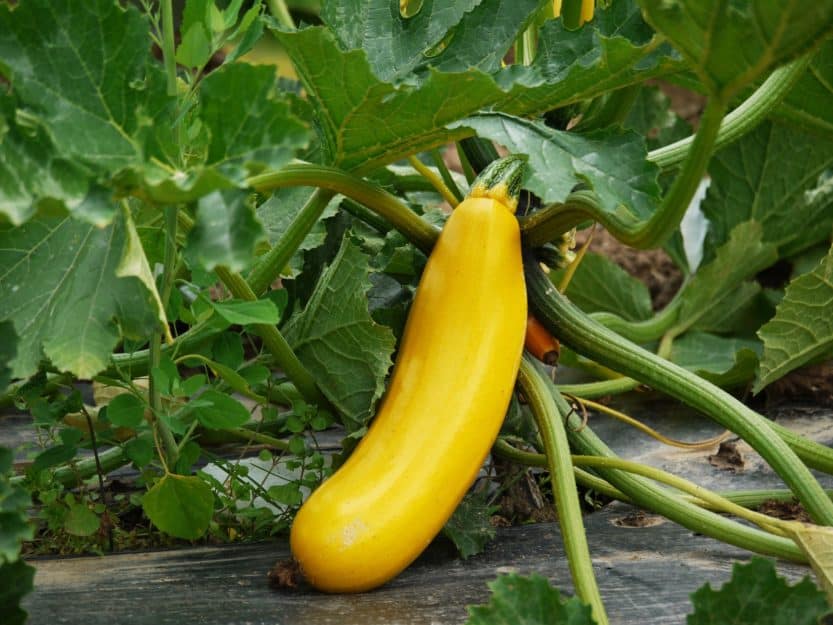
Summer squash, including pattypan and yellow squash, does well in July, favoring warm temperatures for optimal growth. Plant seeds about 1 inch deep and space them about 2-3 feet apart. These plants prefer a soil temperature of around 70°F. Summer squash requires regular watering, especially during fruiting, to prevent bitterness in the squash. Regular harvesting helps encourage more production throughout the summer.
Bush Beans
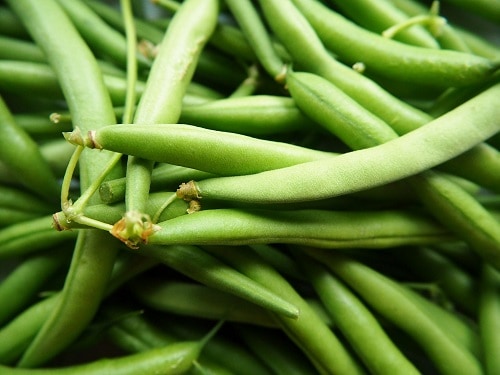
Bush beans grow rapidly and can be planted in July in Zone 9b. These plants thrive best in warm soil conditions, with temperatures staying above 60°F. Plant seeds 1 inch deep and about 2-4 inches apart. Pole varieties do relatively well but may require trellises. Regular watering and providing mulch can help maintain soil moisture, particularly as temperatures rise.
Malabar Spinach
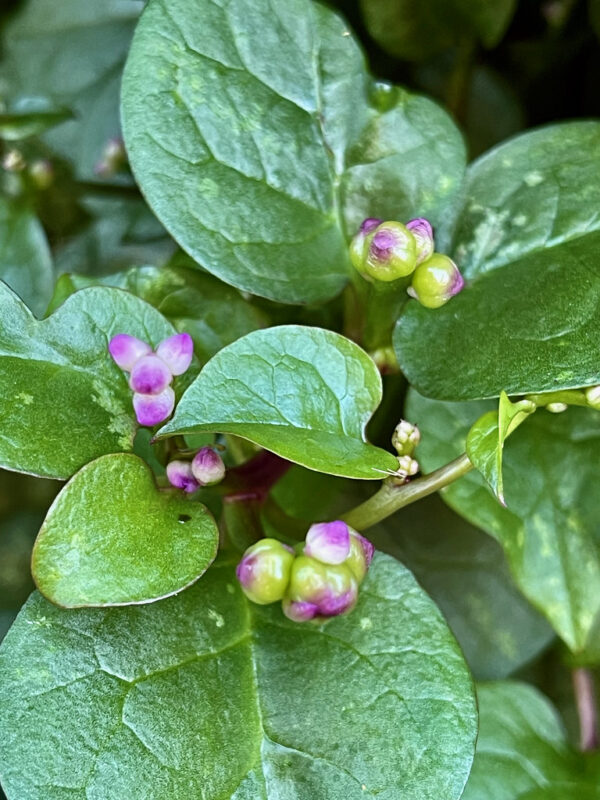
Unlike traditional spinach, Malabar spinach is a heat-loving perennial vine that can be planted in July. It germinates best when soil temperatures are above 70°F, making it a great choice for summer planting in Zone 9b. Plant seeds about 1 inch deep and 18 inches apart in well-draining soil. Malabar spinach loves to climb, so provide a trellis or support structure, and ensure it is watered regularly to promote healthy growth.
Watermelon
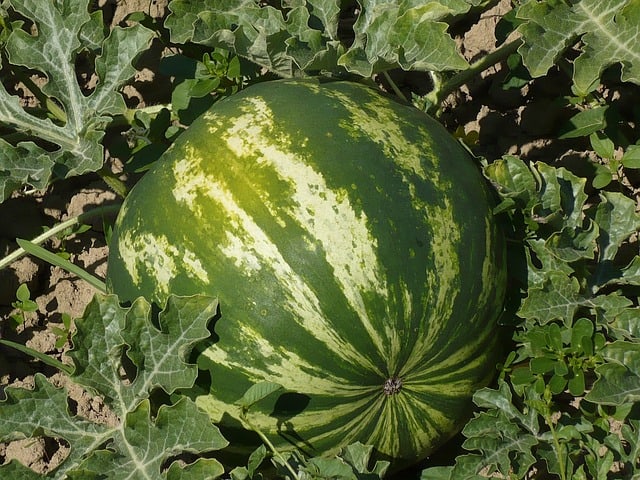
Watermelons are a quintessential summertime fruit that grows exceptionally well when planted in July. These sprawling vines thrive in heat, preferring soil temperatures of 70°F or more. Plant seeds directly in the garden, 1 inch deep, spaced 36-48 inches apart to allow for spreading. Regular watering, especially during fruit development, is key to ensuring a sweet harvest, which usually takes around 80-90 days from seed to fruit.
Flowers To Plant
July is not only a great month for vegetables; it is also an ideal time to introduce several stunning flowers to your garden in Zone 9b.
Sunflowers

Sunflowers bring brightness and cheer to any garden and thrive in the warm July temperatures of Zone 9b. These flowers need full sun and can handle temperatures exceeding 90°F. Plant seeds directly in the soil about 1-2 inches deep, spacing them 12-36 inches apart, depending on the variety. Sunflowers require well-drained soil and regular watering, particularly during dry spells.
Zinnias

Zinnias are vibrant, drought-tolerant flowers that blossom beautifully in July. These annuals prefer warmer conditions and fare well in the heat. Plant seeds directly in the garden, about 1 inch deep and 12 inches apart in well-drained soil. Zinnias benefit from deadheading, which promotes additional blooms throughout the season and helps maintain overall plant vigor.
Cosmos

Cosmos are hardy, easy-to-grow flowers that thrive in sunny locations. With a preference for warm temperatures, they can be sown in July in Zone 9b, requiring well-drained soil and full sun. Sow seeds about 1 inch deep and thin them to 12-18 inches apart for optimal air circulation. Cosmos are known for their resilience, making them ideal for beginner gardeners.
Marigolds
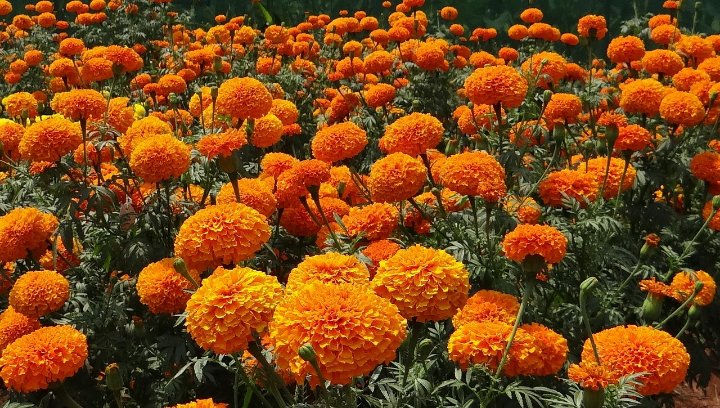
These colorful annuals are renowned for their pest-repelling properties and thrive in the heat of summer. Plant marigold seeds about ¼ inch deep, and space them 6-12 inches apart, ensuring ample airflow around the plants. With their ability to tolerate temperatures up to 95°F, marigolds can flourish with little maintenance, although consistent watering helps keep them vibrant and blooming.
Rudbeckia (Black-eyed Susan)
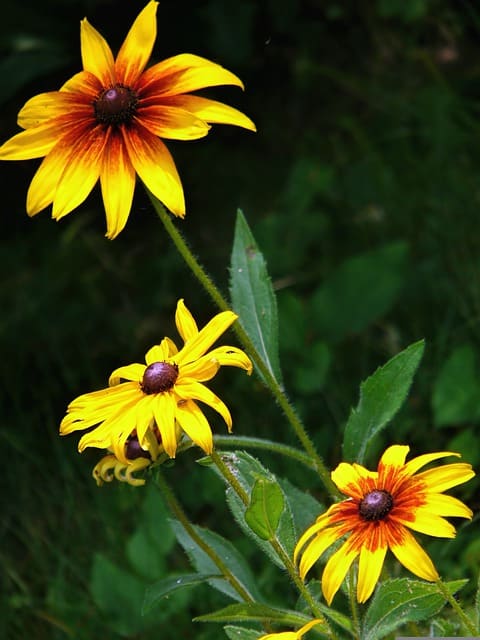
Rudbeckia is a cheerful perennial flower that does well in the heat. They are drought-tolerant once established and thrive in full sun. Plant seeds about ¼ inch deep and space them 12-18 inches apart. Rudbeckia will attract beneficial pollinators to your garden and can bloom for weeks, providing long-lasting color.
Salvia
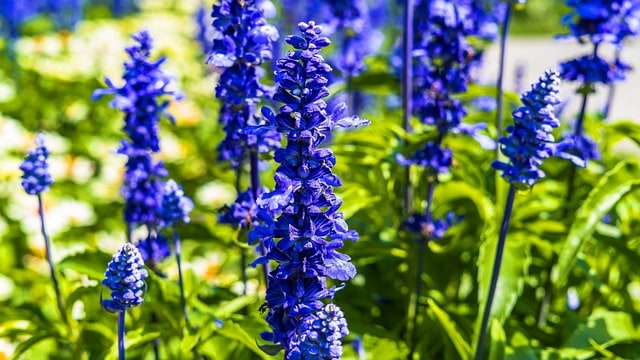
This versatile flower is perfect for attracting hummingbirds and butterflies while providing a pop of color in the garden. Salvia thrives in hot temperatures, typically flourishing in conditions of 60-90°F. Plant seedlings or seeds about 12-24 inches apart in well-draining soil. Regular watering is required, especially through extended dry spells.
Asters
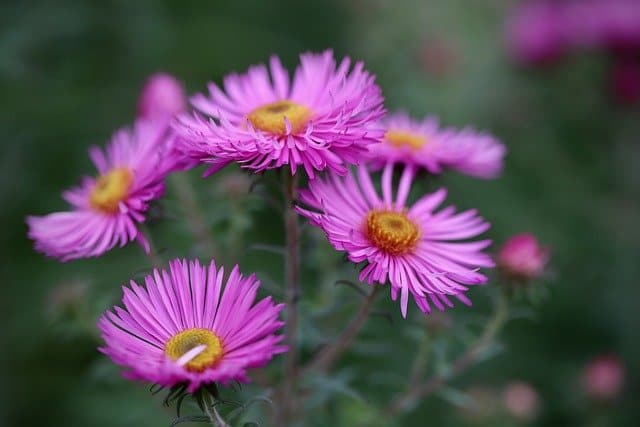
Asters are hardy perennial flowers perfect for adding color to your mid to late summer garden. They do well when planted in July, preferring soil temperatures around 60°F. Plant seeds about 1/8 inch deep, spacing them 12-18 inches apart. Asters typically attract butterflies and are known for their long-lasting blooms, adding seasonal interest until the first frost.
Cleome
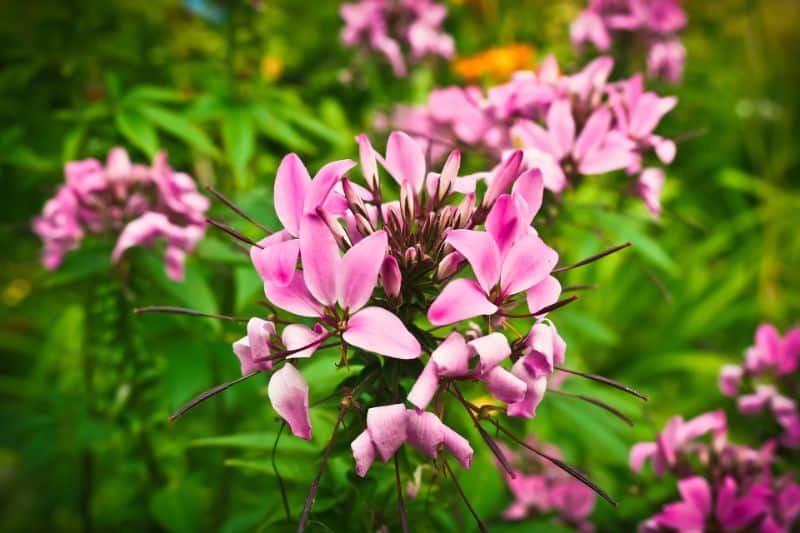
Known for its striking pink and purple flowers, Cleome (or spider flower) does well in Zone 9b’s summer heat. Plant seeds directly into the soil about ½ inch deep and 12 inches apart. Cleome, with its tall, spindly structure, is a unique addition to gardens, and its heat tolerance ensures vibrant blooms throughout the summer months.
Gaillardia (Blanket Flower)
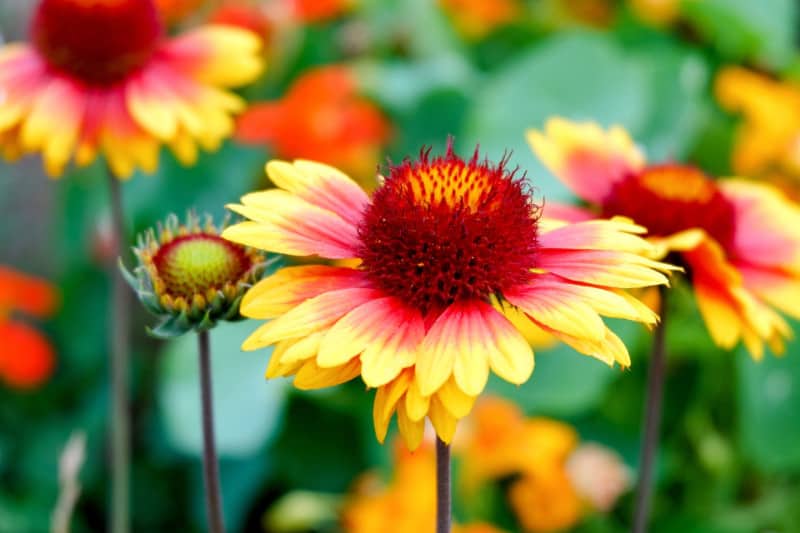
Gaillardia is a blossoming perennial that thrives in warm, well-drained soils and offers rich hues of red and gold. These flowers are tolerant of drought and heat, making them ideal for a July planting in Zone 9b. Plant seeds about ¼ inch deep, spacing them 24 inches apart. Their blooms can last from early summer until the first frost, making them an excellent choice for continuous color.
Lantana
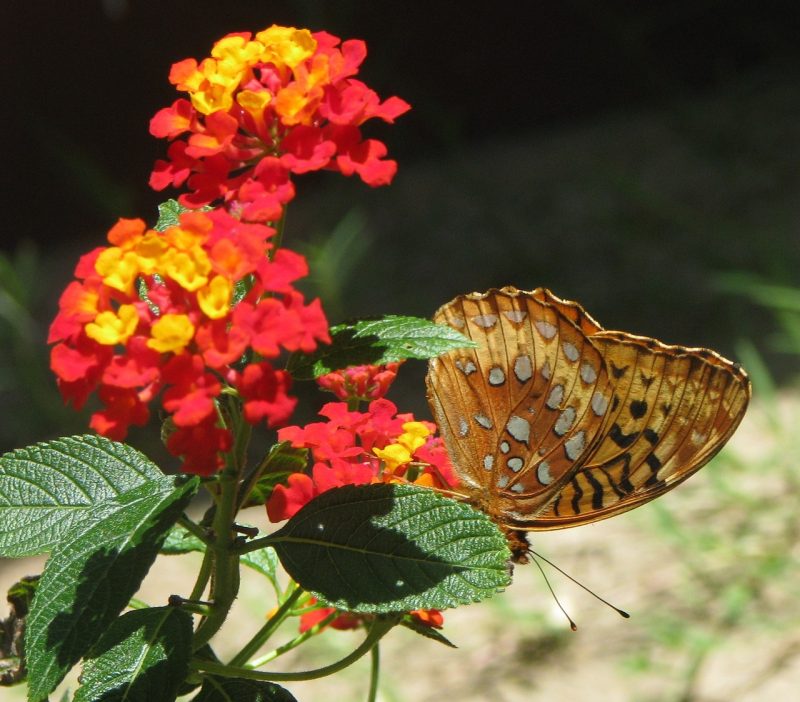
Lantana is an extremely drought-tolerant perennial that is perfect for sunny landscapes. Thriving in the heat, they can handle temperatures well above 90°F. Plant Lantana in well-draining soil, space the plants 24-36 inches apart, and ensure regular watering until established. Their vibrant clusters of flowers are known for attracting butterflies.
Herbs To Plant
Herbs can add flavor to your meals and beauty to your garden. July is a favorable time for planting a variety of herbs in Zone 9b.
Basil
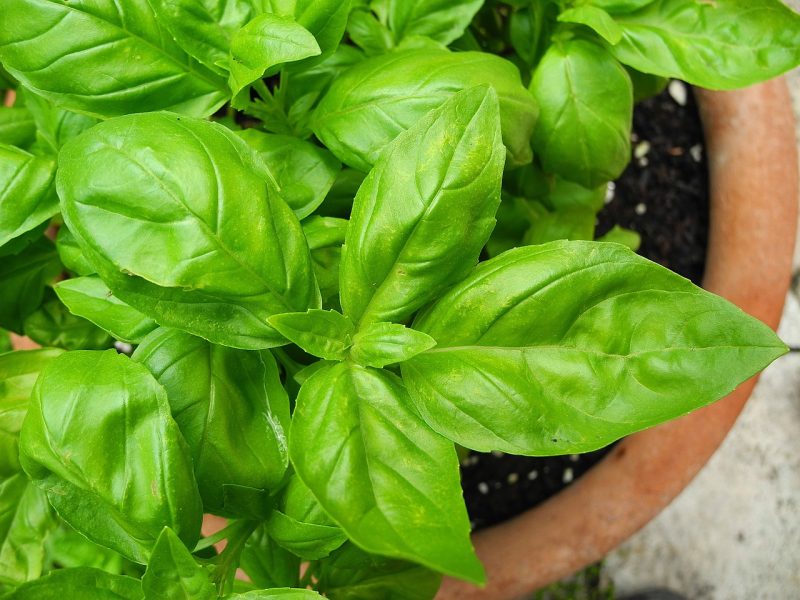
Basil thrives in the summer heat, and July is a great time to plant this aromatic herb. It prefers temperatures between 70°F and 90°F, making it well-suited for Zone 9b. Directly sow seeds about ¼ inch deep and space them 12 inches apart. Keep the soil consistently moist but not waterlogged, as basil loves warm water to encourage growth. Regular pruning also keeps the plant bushy and productive.
Cilantro
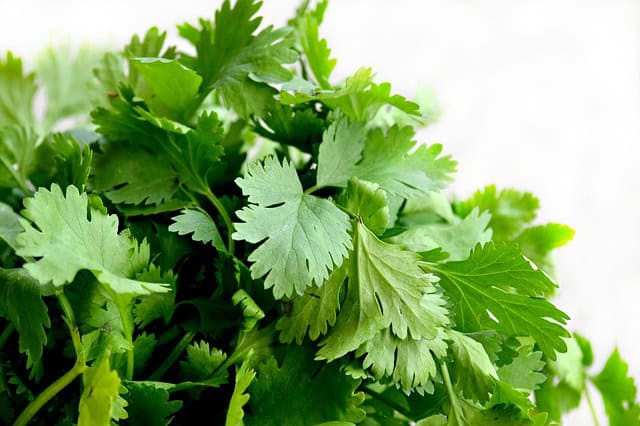
Cilantro, or coriander, is a lovely herb often used in many cuisines. In Zone 9b, cilantro can be planted in July as long as it’s sheltered from the hottest afternoon sun. Sow seeds about ¼ inch deep and space them about 6-12 inches apart. Ideal temperatures for cilantro range from 60°F to 75°F. Regular watering will help prevent bolting and encourage lush foliage.
Dill
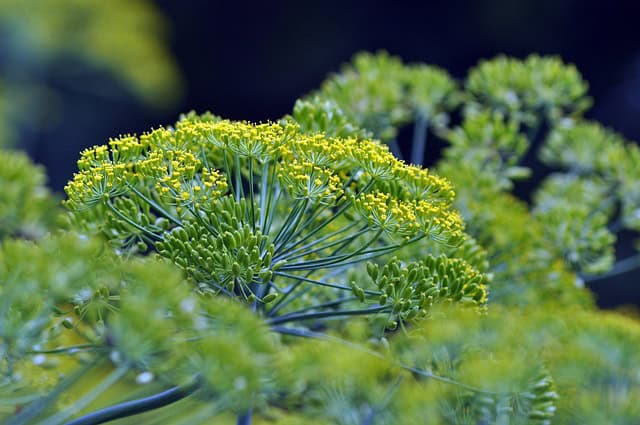
Dill is a versatile herb known for its distinct flavor and decorative blooms. It can be sown in July in Zone 9b, where temperatures peak during summer. Plant seeds about ¼ inch deep and space them 12 inches apart. Dill prefers well-drained soil and full sun. To ensure continued growth, regular harvesting is encouraged, particularly before it flowers.
Oregano
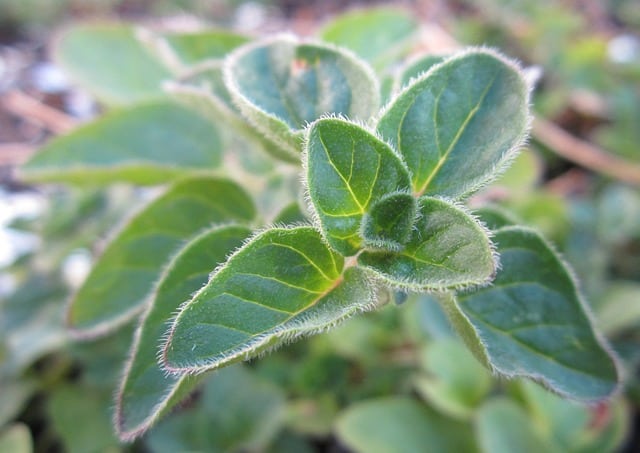
Oregano is a highly aromatic herb that enjoys the hot summer months. It can be planted in July, thriving in temperatures upwards of 70°F. Plant seeds about ¼ inch deep, spacing them 12 inches apart. Once established, oregano is drought-tolerant, and regular watering helps maintain flavorfulness. This perennial herb will provide a harvest for years to come with minimal care.
Thyme
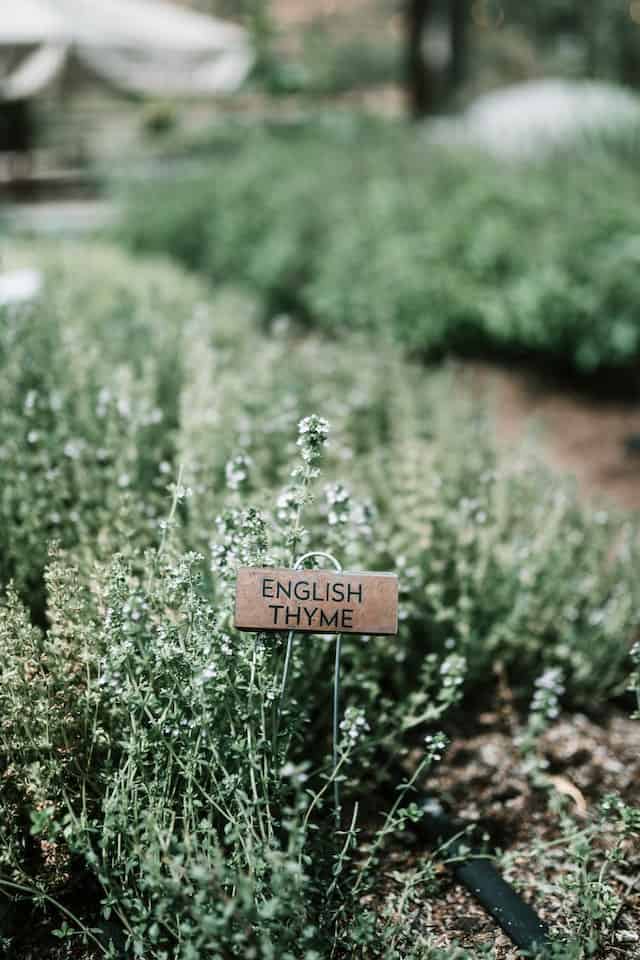
Thyme is another Mediterranean herb that does exceptionally well in hot weather. Available in various varieties, it can be sown in July with the seeds planted about ¼ inch deep, spaced 12 inches apart. It thrives well in well-drained soil and is drought-resistant once established. Regular harvesting will encourage bushier growth.
Chives

Chives are perennial herbs that can be planted in July, thriving in warm temperatures and sunny locations. Plant chive seeds about ¼ inch deep and 6-12 inches apart. These herbs handle humidity well and require regular watering to keep the soil moist. Harvesting chives encourages new growth and enhances their flavor profile.
Parsley
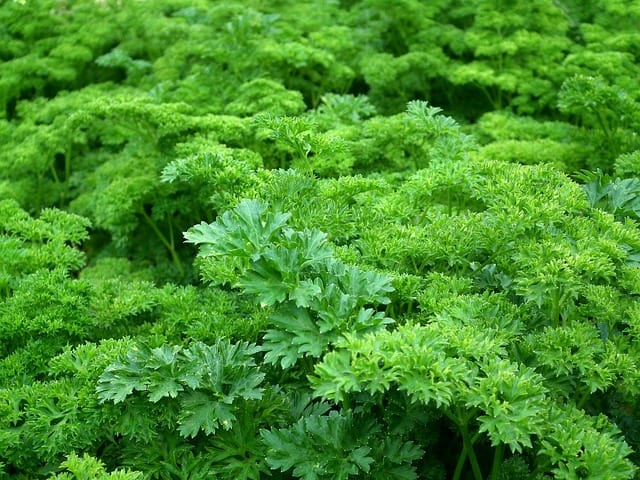
Parsley can be grown as an annual in Zone 9b and thrives best in cool morning temperatures but can be planted in July if shaded during peak temperatures. Plant seeds about ¼ inch deep, spacing them 12-24 inches apart in fertile soil. Regular watering is essential to maintain moisture levels and prevent wilting.
Mint
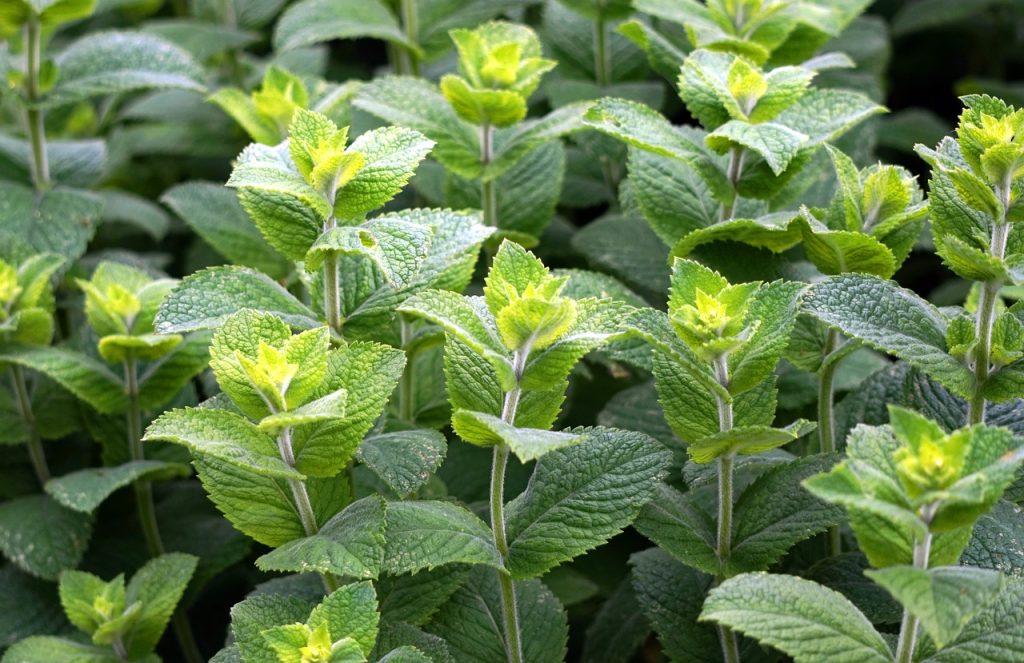
Mint is an invasive herb that flourishes in warm, moist environments. Planting mint in July is a great option, as it gets the full sun needed for robust growth. Space mint plants about 12-18 inches apart as they spread rapidly. Regular watering encourages growth, but it’s wise to plant mint in a container or designated area to manage its spread effectively.
Fennel
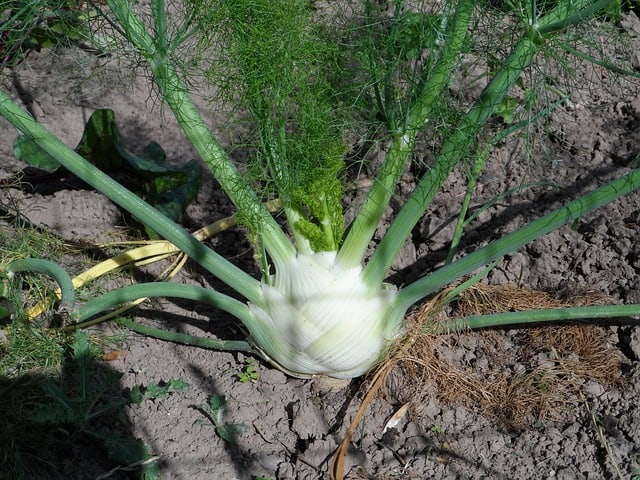
Fennel is a unique herb that grows well in hot conditions, making it an excellent choice for July. Plant fennel seeds about ¼ inch deep and 12 inches apart. This herb enjoys well-drained, fertile soil and prefers full sun exposure. Regular watering will enhance the flavor of Fennel bulbs, allowing for a rich culinary experience.
Lemon Balm

Lemon balm is a fragrant herb that does wonderfully in hot weather. Plant seeds about ¼ inch deep and space them 12-18 inches apart. With a preference for loamy, well-drained soil, lemon balm thrives in full sun to partial shade and can handle high temperatures. Water regularly to keep the soil moist, ensuring a strong, pleasant aroma from the plant.
Landscape Plants To Plant in July
In July, you can also consider various landscape plants that can thrive in Oregon’s warm climate. Here are ten excellent options suited for this time of year.
Oleander
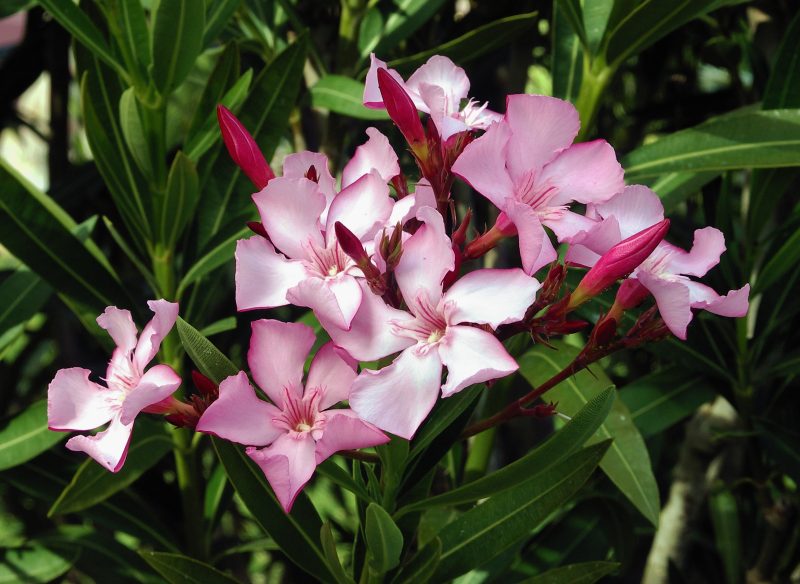
Oleander is a hardy shrub loved for its showy flowers and heat tolerance. Oleander can handle extreme temperatures, making it suitable for planting in July in Zone 9b. Plant oleander in well-draining soil, spacing plants 3-4 feet apart. This plant thrives in full sun and requires regular watering until it establishes a strong root system, after which it is quite drought-tolerant.
Bougainvillea
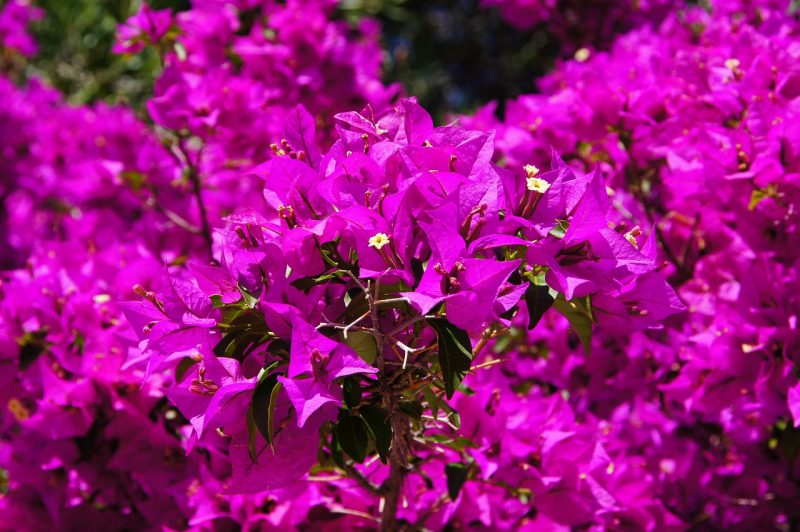
Bougainvillea is a climber that adds vibrant color to any garden. It flourishes in hot climates and can be planted in July in Zone 9b. Space the plants 3-4 feet apart, as they can grow to be quite large. Bougainvillea loves full sun and well-drained soil, requiring regular watering until established. Once established, it’s highly drought-resistant.
Hibiscus
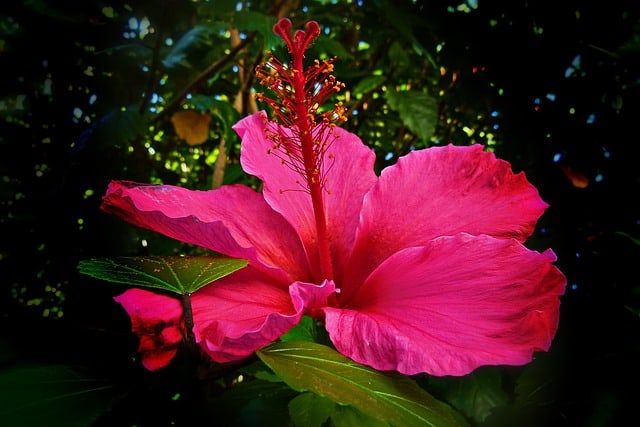
Hibiscus flowers are a tropical delight that thrives in the warmth of July. They can be planted as grafted shrubs or seeds in well-draining soil, spaced 3-4 feet apart. Hibiscus prefers full sun and moderate watering, as it does not tolerate drought well. The striking blooms provide dynamic color throughout the summer.
Lantana

Lantana is another flowering plant that thrives in heat and humidity, making it an excellent choice for a summer landscape. Preferring well-draining soil, station them 24-36 inches apart, allowing room for their sprawling nature. Regular watering will help them establish; however, they are drought-tolerant once settled, producing bright clusters of flowers attracting butterflies and bees.
Agapanthus

This stunning perennial plant offers beautiful blue or white flowers and works well in Zone 9b’s warm climate. Plant agapanthus in July, spacing them 12-18 inches apart in well-drained soil. They love full sun and require regular watering for optimal growth, especially during the flowering stage, ensuring vibrant blooms.
Coreopsis
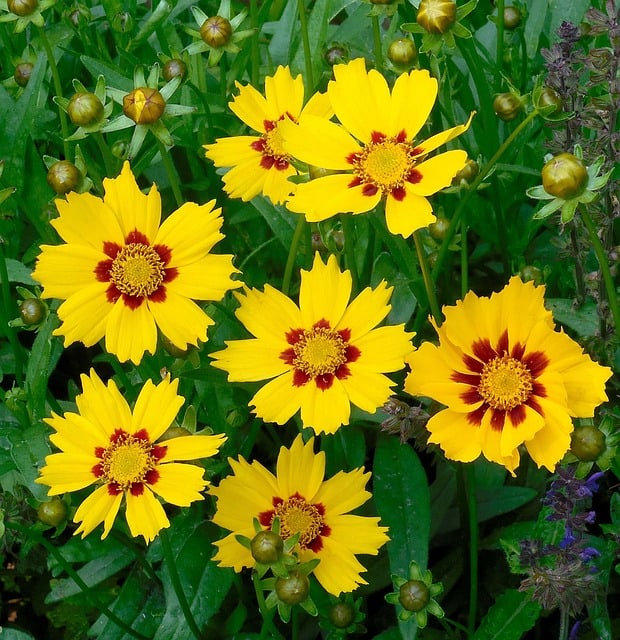
Coreopsis is a drought-tolerant perennial that thrives in full sun. It’s a good choice for planting in July and can be spaced 12-18 inches apart in well-draining soil. The plant is resilient, requiring minimal watering once established but blooms beautifully, providing a burst of color to gardens through late summer.
Japanese Honeysuckle
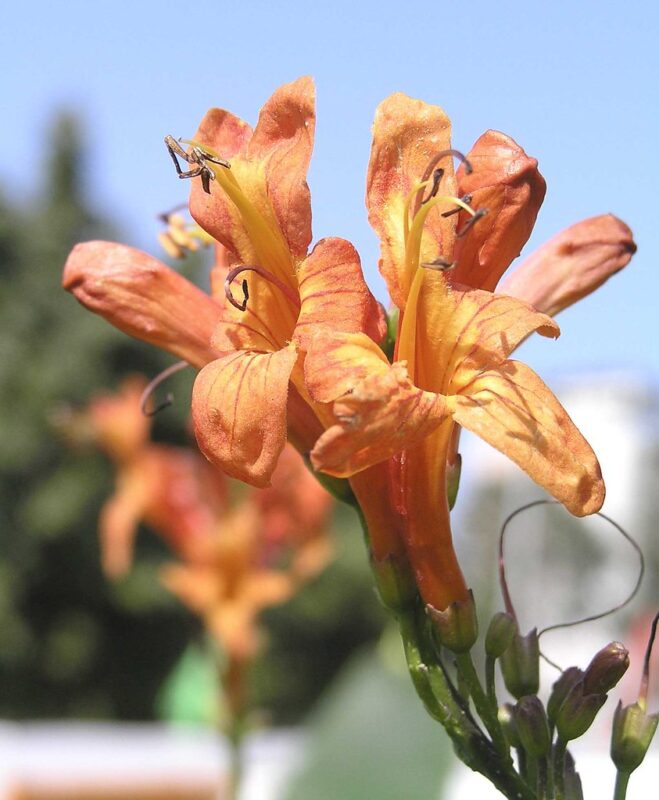
This vigorous vine thrives in the heat and can be an excellent addition to arbors and trellises. Plant in July, spacing plants 6-10 feet apart to allow for their rapid growth. Honeysuckle loves full sun but can tolerate some shade. Regular watering is recommended until the plants are well established.
Plumbago
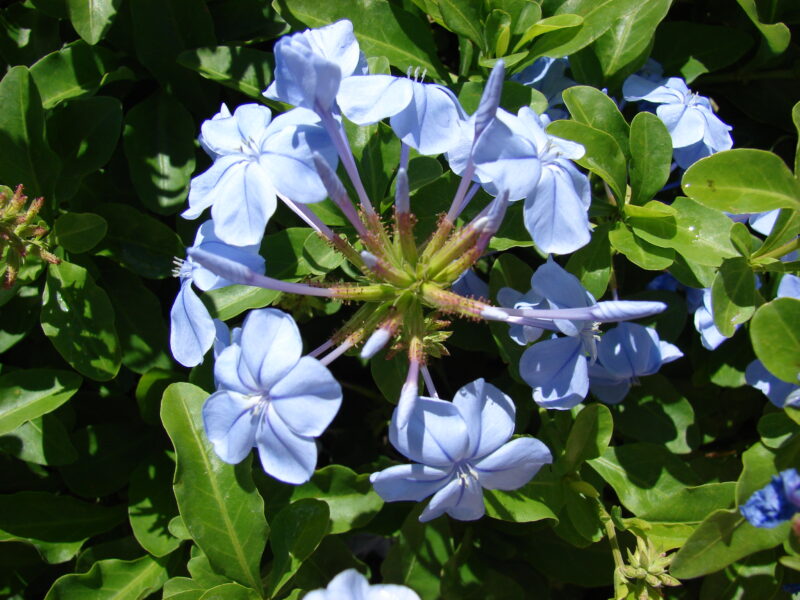
Plumbago is a strikingly beautiful shrub native to South Africa and thrives in the heat. Plant in well-draining soil with full sun exposure, spacing plants about 3-4 feet apart. This drought-tolerant shrub requires regular watering until established and attracts pollinators, providing lovely foliage and vibrant flowers.
Butterfly Bush
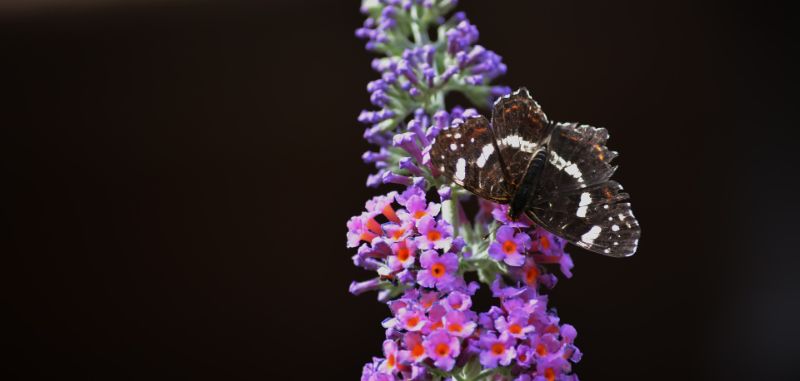
True to its name, the butterfly bush attracts a variety of pollinators to your garden. Ideal for hot summers, this bush can be planted in July, requiring well-draining soil and full sun. Plant 3-4 feet apart to allow for its sprawling nature. Regular watering will support a strong establishment, and once mature, the butterfly bush is fairly drought tolerant.
Salvia

Salvia is a versatile flowering plant suitable for various landscapes, thriving in full sun and hot weather. Plant in well-drained soil in July, spacing plants 12-24 inches apart. Regular watering helps establish roots and encourages prolific blooming. Known for attracting pollinators, salvia adds vibrant color while enriching your garden’s biodiversity.


